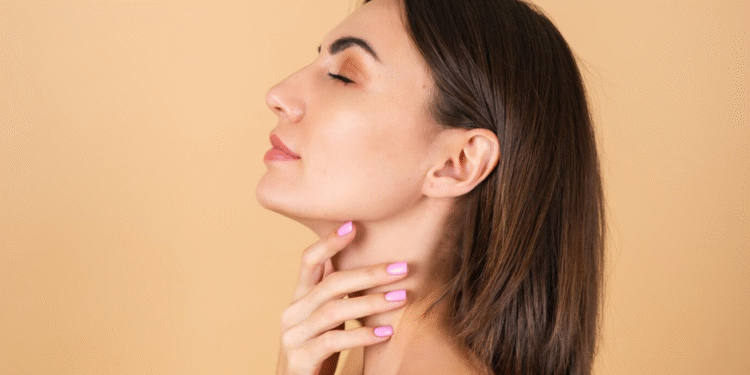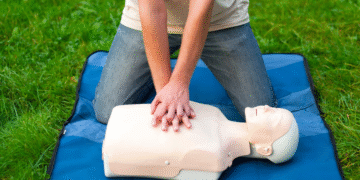Facial contouring is one of the most sought-after aesthetic goals in modern cosmetic procedures. Among the many treatments available, buccal fat removal stands out as a subtle yet effective option for those seeking a more chiselled and defined facial structure. This minimally invasive procedure targets excess fat in the mid-cheek area, creating enhanced definition along the cheekbones and jawline.
In this article, we will explore how buccal fat removal works, who it’s suitable for, and how it compares with or complements other aesthetic procedures like earlobe repair surgery—another specialised treatment aimed at facial refinement.
What Is Buccal Fat and Why Is It Removed?
The buccal fat pads are naturally occurring fat deposits located deep in the lower cheeks, between facial muscles. While everyone has buccal fat, its volume varies from person to person and is often determined by genetics.
In some individuals, these fat pads contribute to a round or “baby-faced” appearance, which may be perceived as a lack of facial definition. Buccal fat removal aims to reduce this volume, giving the face a slimmer, more contoured appearance.
How the Procedure Works
Buccal fat removal is a surgical procedure typically performed under local anaesthesia. Here’s what to expect:
Consultation and Planning

Your surgeon will assess your facial structure, fat distribution, and skin quality. It’s essential to ensure you’re a good candidate—excessive removal in the wrong person can lead to hollow cheeks over time.
Incision and Access
A small incision is made inside the cheek, near the upper molars. This internal approach ensures no visible scarring.
Fat Removal
The surgeon gently presses externally on the cheek to expose the buccal fat pad, then carefully removes the desired amount. Only a portion of the fat is removed to preserve natural volume and avoid an overdone look.
Closure and Recovery
The incision is closed with dissolvable sutures, and the recovery period begins. Most patients can return to light activities within a few days.
Benefits of Buccal Fat Removal
The appeal of buccal fat removal lies in its ability to subtly enhance facial aesthetics without dramatically altering one’s appearance.
Enhanced Jawline and Cheekbones
By reducing fullness in the lower cheeks, the natural bone structure becomes more visible, giving the face a sculpted look.
Balanced Facial Proportions
In individuals with excess cheek volume, removing some buccal fat creates better harmony between facial features, particularly when combined with procedures like chin augmentation or dermal fillers.
Permanent Results
Unlike some non-surgical facial contouring methods, the results of buccal fat removal are long-lasting. Once the fat is removed, it does not regenerate.
No External Scarring
Since the incision is made inside the mouth, there are no visible scars, making it a discreet option.
Who Is a Good Candidate?

While buccal fat removal can be transformative for the right individual, it’s not suitable for everyone. Ideal candidates include:
- People with full or round cheeks desiring more facial definition
- Non-smokers in good health
- Individuals with realistic expectations
- Those in their 20s to 40s with good skin elasticity
It may not be suitable for individuals with already narrow faces or those concerned about volume loss with age.
How It Relates to Other Facial Procedures
It’s common for patients to seek multiple procedures to achieve their ideal facial profile. Buccal fat removal is often performed in conjunction with:
Earlobe Repair Surgery
Though not directly related to fat removal, earlobe repair surgery addresses stretched or torn earlobes due to heavy earrings or trauma. While this is a minor procedure, it significantly contributes to overall facial symmetry and aesthetics.
Patients seeking a comprehensive facial refresh may consider addressing both structural issues like excess cheek fat and minor imperfections such as damaged earlobes.
Chin or Jawline Enhancement
Buccal fat removal enhances the appearance of the jawline, and when combined with chin fillers or implants, it can create an even more dramatic transformation.
Facelift or Mini-Facelift
In patients undergoing a facelift, particularly those with sagging in the midface, buccal fat removal can refine results by removing residual cheek fullness.
Recovery and Aftercare
Recovery from buccal fat removal is generally straightforward, but proper aftercare is essential for optimal results.
- Swelling and Bruising: Expect moderate swelling for the first week. Most bruising is internal and resolves on its own.
- Diet: A soft food diet is usually recommended for the first few days to avoid irritating the incisions.
- Oral Hygiene: Rinsing with saltwater or an antiseptic mouthwash helps prevent infection.
- Follow-Up: Most surgeons schedule a follow-up within one to two weeks to assess healing.
Risks and Considerations
Like any surgical procedure, buccal fat removal carries potential risks:
- Over-resection leading to a hollowed appearance
- Injury to nearby facial nerves or salivary ducts
- Infection or poor healing of the internal incision
Choosing a qualified and experienced cosmetic surgeon significantly reduces these risks.
Conclusion
Buccal fat removal is a safe and effective way to enhance facial contours and highlight natural bone structure. It offers permanent results with minimal downtime, making it a popular option for individuals looking to subtly refine their appearance.
While often considered a standalone treatment, it can be paired with procedures like earlobe repair surgery to address other aesthetic concerns and achieve comprehensive facial harmony. Whether you’re looking to slim your cheeks, repair damaged earlobes, or refine your overall appearance, consulting with a skilled cosmetic surgeon will help you create a tailored plan that meets your goals.













